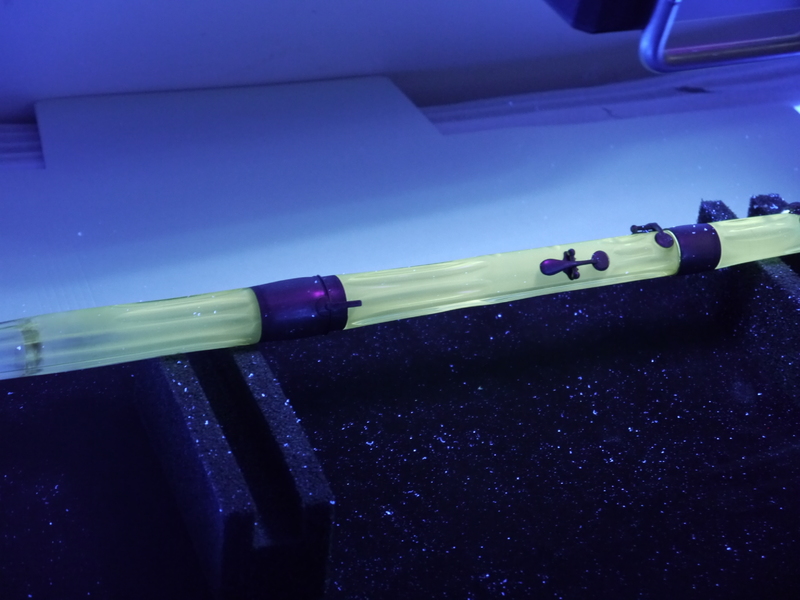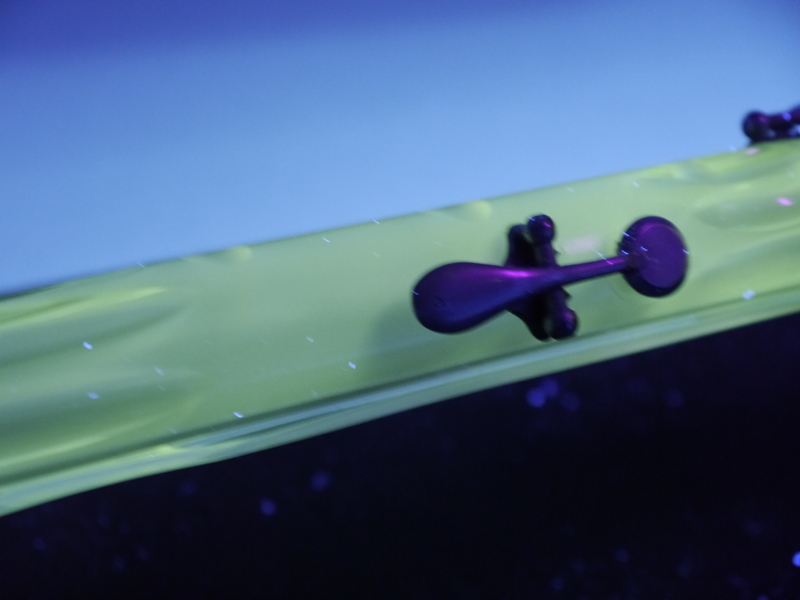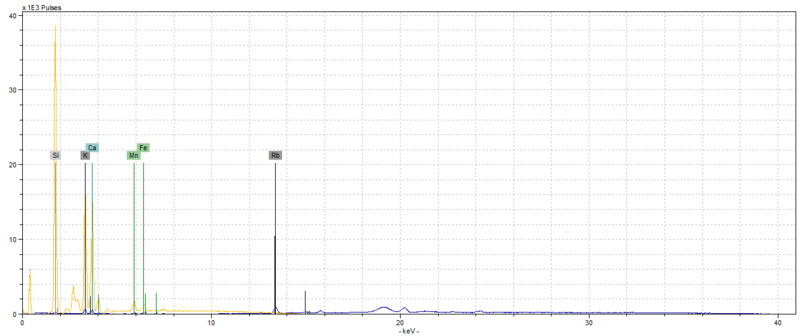Glass flute
ca. 1860, Inv. No. 58531
UV light fluorescence could be performed on the whole flute. The colorless, transparent glass showed a distinct yellow fluorescence, that is an indicator for the presence of manganese in the matrix.
XRF was conducted at several points on the three components of the flute, which can be taken apart, in ambient conditions. The resulting spectra matched clearly, which reflects the homogeneity of the glasses used. Consequently, the interpretation of only one measurement taken from the glass in the instrument (P1) was justifiable.
The glass flute is made of a potash-silica glass, without any other network formers, such as arsenic or lead. The composition is comparable to a flute built by Claude Laurent, presently held at the Library of Congress in Washington, DC (Buechele et al. 2015). Laurent, who was a clockmaker, had his workshop in Paris, Quai de Gevres, No. 34, first patented the production of glass flutes in 1806. His aim was to improve their longevity as well as the tonal sharpness and purity (Laurent 1806). Even though the patent mentions the use of "cristal", which could indicate a lead glass, most of the Laurent flutes are in fact alkali glass with potassium as the principal component (Buechele et al. 2015; Erin 2014). Therefore, the Deutsches Museum flute shows a typical composition for this sort of instrument. The presence of manganese, that was presumed after the UV fluorescence, could be confirmed as a decolorizer.
From a preservation perspective, the glasses are susceptible to high levels of humidity, because of the potash fluxing agent, and to long time exposure to UV light (several years). The high energy electromagnetic radiation can cause reverse oxidation in the manganese oxide, that was originally added as a decolorizer. In the oxidized state, this component turns the glass slightly pinkish or purplish. The effect can be seen on one of the glass plates from the glasschord.
Click here for more information on the glass flute.
Citation: Charlotte Holzer, ‘Findings from Non-destructive Material Analysis on Musical Glass Instruments’, in: Materiality of Musical Instruments. A Virtual Exhibition.





